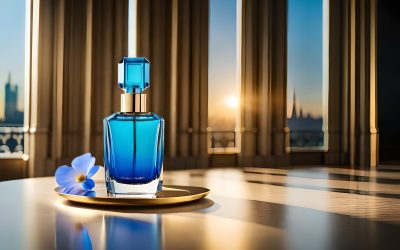In marketing, color evokes emotion. Color can help you stand out from the crowd or get buried in the noise of today’s marketing landscape.
Color helps you capture your audience by seeing what you want them to see, feeling what you want them to feel, and doing what you want them to do. Color helps position your brand in a specific and intentional way in customers’ hearts and minds. This is why color psychology is so critical in marketing.
Alternatively, without intentionality behind the use of colors, it can negatively impact your brand message, causing it to be passed or dismissed by your target audience.
Color usage is so important that even NASA has devoted resources to the topic!
Basics of Color Theory
Color theory isn’t just for artists, painters, and graphic designers. It’s for anyone who wants to gain a deeper understanding of marketing.
Primary Colors
Red, Blue, Yellow. From these three colors, you’re able to create secondary colors.
Secondary Colors
Purple. Green. Orange. Secondary colors are those between the two primary colors on the color wheel.
Tertiary Colors
Tertiary colors go one step further by blending two colors, such as yellow/green, red/orange, red/purple.
Exceptions
Of course, exceptions can abound when it comes to talking about primary and secondary colors. RGB is the method of color display for screens, which stands for Red, Green, and Blue. The primary method of color display in printing is CMYK, standing for Cyan, Magenta, Yellow, and Black.
How To Choose Color Combinations
It’s important to remember that people like simplicity when it comes to colors. Too many and the imagery becomes noisy and less than memorable. It’s also important to remember that color has meaning and evokes emotion, so every time you add color, you’re adding to your brand’s message.
Use Complimentary Colors
When you use complementary colors in design, it makes things stand out more. Complimentary colors are often opposites on the color wheel. For example, Blue is the opposite of orange. Red is the opposite of green. Yellow is the opposite of purple.
Use complementary colors with caution, and only when you want things to really stand out. Otherwise, it could become distressing to the human eye, making it difficult to read/view for an extended period. For example, if you have an overall design utilizing different shades and tones of green, using a red call to action button will really stand out.
Often, pro designers will choose a primary color as the main color in a design and accent it with its complementary color. It provides a beautiful pairing but also gives the eye a break periodically. This is why it’s such an effective strategy for standing out.
Use Split Complementary Colors
If you want to take your design (and message) further by bringing three colors together, you can use the split complementary color method. This lets you add a third color to the palette, using one as a base and two as accent colors.
For example, if you wanted to use green as a primary color, a red-orange color, and a red-purple color would make excellent accents, as it’s a perfect complementary color split. This type of color scheme doesn’t provide such stark contrasts, which lessens the tension in the imagery, bringing in variety that can be used in a meaningful way.
Use Analogous Colors
Analogous colors are ones that are beside each other on the color wheel. Doing this provides a much calmer look and feel to a design. Blue and purple pair well together for a calming effect, but you may need to add a complimentary color to get an item to stand out.
Use Monochromatic Colors
Monochromatic colors are a single color with its tints, shades, and tones. They are even more soft and subtle than analogous colors.
The Psychology Behind the Colors
Now that you have a basic understanding of how to use different colors, let’s dive into what they all mean. Color is a powerful tool because it has a direct effect on how we think, and can also have an impact on behaviors. Color directs our eye and helps us interpret messages. Because of this, it is so important for marketers to understand what colors mean to people.
Blue
Blue often evokes feelings of trust and dependability. It’s smooth and gentle, and because of that, it’s one of the most loved colors across the globe. Blue lends more of a mental reaction than it does a physical one as the color red does.
Alternatively, when overused, blue can be perceived as cold and distant.
In branding, blue often represents Integrity, Trust, Tranquility, Loyalty, Intelligence, and Strength.
(e.g., Dell, JP Morgan, American Express, Dasani, Walmart)
Green
Green often evokes feelings of balance and harmony. It generates a clear sense of right from wrong because it blends the logical response with the emotional response. It’s also one of the most abundant colors in nature, reflecting life, growth, and peace.
When overused, or used in the wrong context, green can evoke a negative response surrounding greed and materialism, but overall, it has more positive aspects than negative.
In branding, green often represents Growth, Freshness, Environmental, and Peace.
(e.g., Whole Foods, Starbucks, BP, Holiday Inn)
Yellow
Yellow often evokes feelings of joy and cheerfulness. The wavelength of yellow is especially long, making it a color with one of the most potent psychological meanings, while also being easy to visibly see and tolerate. (Yellow is the first color infants respond to!)
When you’re trying to increase confidence, inspire, motivate, and lift spirits, yellow is your color—careful overusing it, though. Overuse can generate a more critical response triggering self-esteem issues, fear, or anxiety.
In branding, yellow often represents Happiness, Originality, Energy, and Optimism.
(e.g., Shell, Best Buy, Hertz, Goodyear)
Purple
Purple often evokes imagination and spirituality. It contains the power of red with the stability of blue. It’s a mysterious color, as it soothes but also intrigues and inspires creativity. Careful not to overuse it, though, as too much can lead to deep introspection and mind wander.
In branding, purple often represents Royalty, Spirituality, Luxury, Creative, and Imaginative.
(e.g., T-Mobile, Yahoo, Taco Bell)
Pink
Pink often evokes compassion, love, and femininity. It’s a physical color that often lends itself to romance, care, and nurture. Too much of it, however, and it can come across as juvenile, immature, and even exhausting.
In branding, pink often represents Femininity, Compassion, and Playfulness.
(e.g., Barbie, Baskin Robbins, Avon, Mary Kay)
Red
Red often evokes very powerful emotions, whether it be power, love, and affection or fear, terror, and survival. Whatever context it is used in, be careful not to oversaturate to avoid being perceived as aggressive and extreme.
In branding, Red often represents Power, Strength, Passion, Excitement, and Youthfulness.
(e.g., Coca-Cola, Netflix, Lego, Target, CNN)
Orange
Orange evokes an interesting psychological combination, as it combines the power of red with the energy of yellow. The mix often makes a good representation of physical comforts, motivations, and enthusiasm. Some studies suggest that it can even stimulate the appetite.
Careful not to overuse orange, as it can begin to seem less genuine, losing its psychological effects.
In branding, orange often represents Courage, Originality, Success, Cheerful, and Friendly.
(e.g., Amazon, Boost Mobile, Nickelodeon)
Black
Black most often evokes a sense of sophistication, independence, or seriousness. Alternatively, it can sometimes display evil, mystery, or depression. Black is an excellent color for legibility, as the stark contrast between it and white make it ideal for long-form text.
Careful not to overuse, as black in excess, can evoke sadness and negativity.
In branding, black often represents Balance, Neutrality, Class, Calm, and Sophistication.
(e.g., Nike, Honda, Mercedes)
White
White evokes feelings of purity, cleanliness, peace, and innocence. It can also represent a blank slate or new beginnings. It’s a great color for simplicity and minimalism, but too much can lend itself to feelings of isolation and loneliness.
In branding, white often represents Cleanliness, Purity, and Peace.
(e.g., Apple, Chanel, Dolce & Gabbana, Miramax Films)
Scientific Findings Of Color
A 20th-century color researcher, Faber Birren, discovered that bright colors promoted physical muscle activity, while cooler colors promoted stronger mental activities. He also found that red stimulates our nervous system, and blue relaxes it.
Test Your Color Selections
You can’t know how your audience will respond to colors without testing. This is why we encourage split testing your creatives when it comes to advertising. This helps you gain insights into how your specific target audience responds to your color selections to determine which combination of colors and placements will generate the most leads.
Need help with your color selections? Reach out to our experts who are excited to help you!



0 Comments